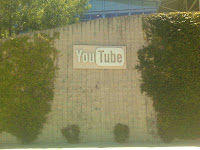얼마전에 이 블로그를 통해서 YouTube 스타 KevJumba에 대해서 간단히 언급한 적이 있다. 도대체 무엇이 이토록 이 보잘것 없는 동양 소년의 팬들을 열광시키는 것일까? 하루에 수십번도 유투브 비디오를 보면서 생각하지만, 거기에 대한 답은 아직도 못 구하고 있다. 흔히 마케팅 전문가들이 말하는 virality는 과연 어떻게 생성할 수 있는지 끈임없이 고민하고 있지만 아마도 죽을때까지 정답을 찾지는 못할것같다.
전에 보여줬던 동영상은 맛배기였고, 이번에는 KevJumba가 제대로 뮤직쉐이크를 위한 동영상을 만들었다. 내용은….KevJumba의 꿈 중에 하나가 항상 음악을 하는거였는데, 드디어 기회가 되어서 할리우드로 스튜디오에서 음반을 녹음하는 내용의 동영상이다. 재미있는거는 스튜디오에서 매니저들이 여러 종류으 악기랑 음반 기구를 보여주고 있는데 KevJumba가 “아..이렇게 복잡한거 필요없구요, 저는 그냥 뮤직쉐이크를 사용하겠습니다.”라는 말을 하면서 뮤직쉐이크로 직접 음악을 만드는 장면이 나온다. 그리고 결국에는 좋은 곡을 만들어서 뮤직쉐이크를 통해서 KevJumba 팬들이 이 곡을 mp3나 링톤으로 구매할 수 있도록 하는게 이번 캠페인의 큰 전략이었다. 솔직히 이 4분짜리 동영상 중 뮤직쉐이크가 언급되는 부분은 극히 작으며, 왠만큼 집중하지 않으면 그냥 눈치 채지 못하고 지나칠 수도 있는 부분이다. 처음에 이 동영상을 봤을때 내가 스스로나 KevJumba 매니저한테 하였던 질문은 “야, 이거 뮤직쉐이크 노출되는 시간이 너무 작지 않냐…조금 더 홍보를 많이 해야지.” 였는데 KevJumba 쪽에서 극구 그냥 이렇게 가자고 해서 썩 내키지는 않았지만 그냥 go를 하였다.
약 2주 전에 KevJumba의 유투브 채널에 올라갔는데, 그 반응은 정말 폭발적이었다. 자그마치 첫날 뮤직쉐이크 홈페이지로 수만명의 사람들이 접속을 하였으며, 뮤직쉐이크 어플리케이션 다운로드, 사용자 음악 제작 등의 숫자들은 지금까지의 뮤직쉐이크 기록을 완전히 다 갈아치울 정도였다. 참고로, 2주가 지난 오늘 이 동영상은 약 90만번 이상 유저들이 view를 하였다. CRAZY!!
그리고 이거는 KevJumba가 직접 녹음한 KevJumba 링톤이다.
